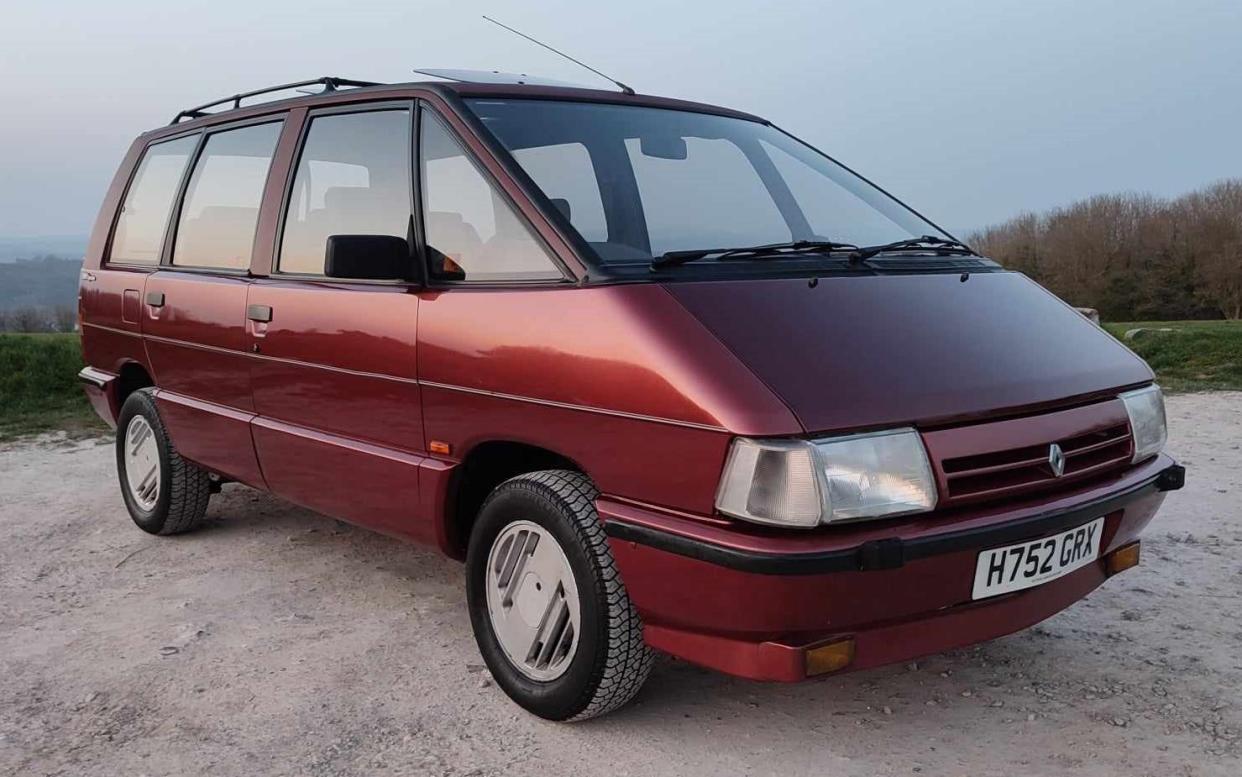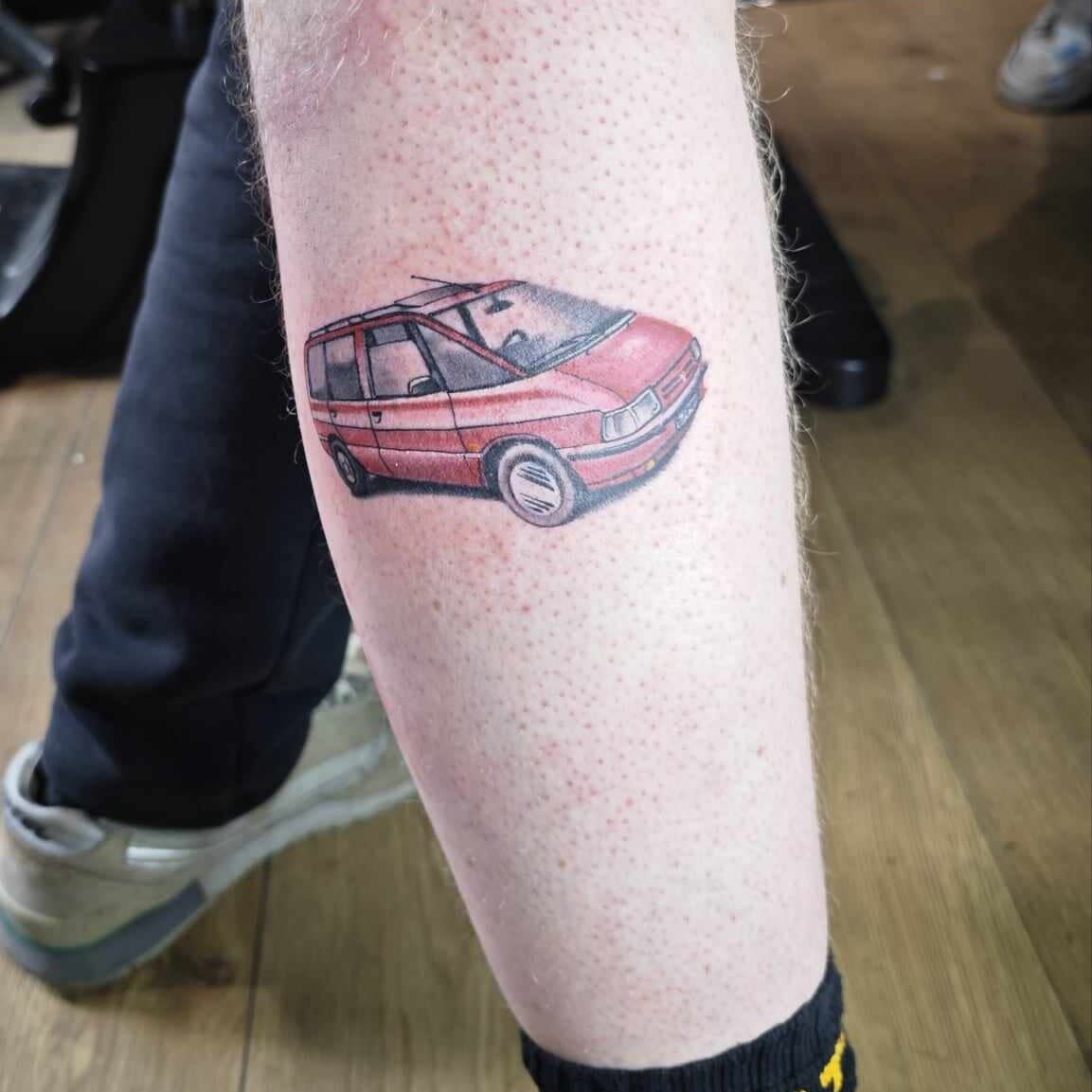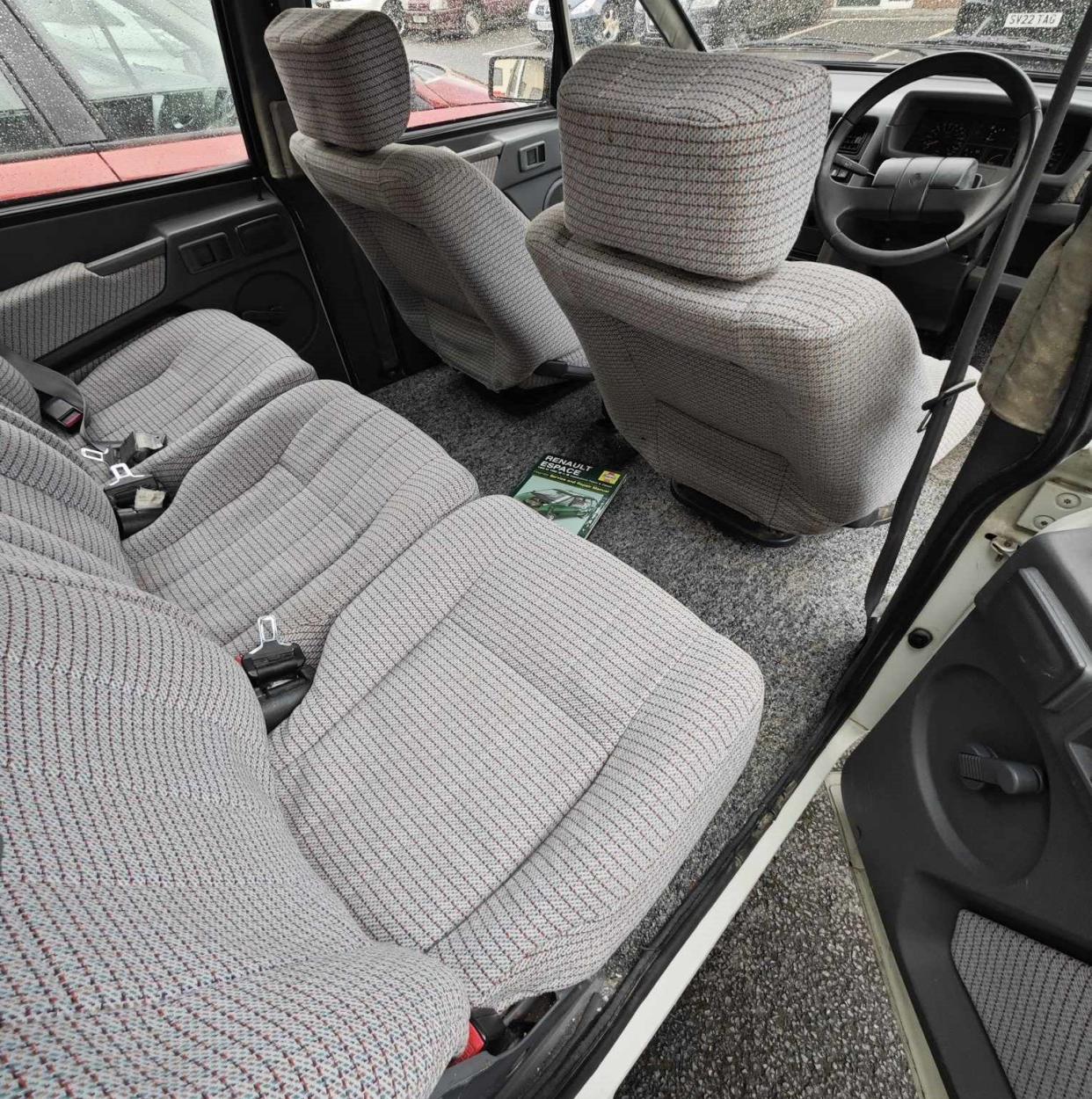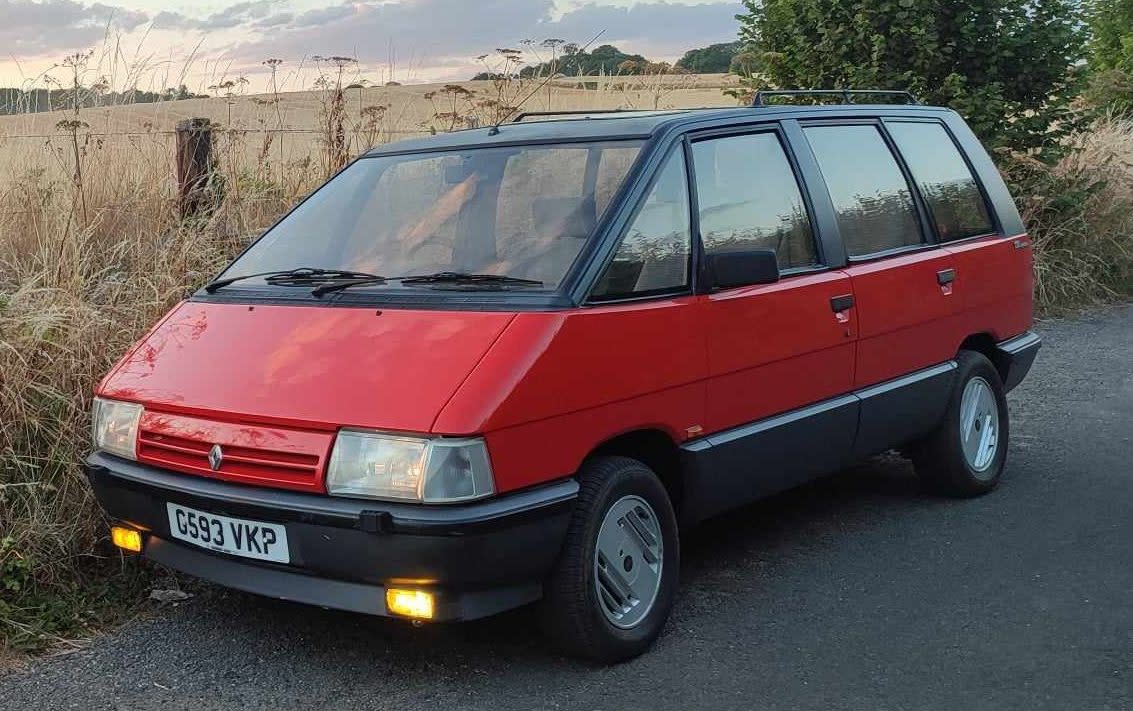UK’s rarest cars: the Renault Espace at 40

When the Espace made its bow in April 1984, it was a car with no direct rival from the British motor industry. Four decades later, the few surviving early versions can provoke great devotion from their owners. Robin Bartlett is not only the custodian of several of these fine Renaults; his enthusiasm prompted him to commission an Espace tattoo on his right leg.

The first Renault multi-purpose vehicle, or MPV commenced as a Chrysler UK project. Its designer Fergus Pollock conceived the idea in 1977, explaining to Matra Sport of Denmark that it was “a one box styling exercise codename: Supervan. While it started off as my own skunk [unoffoicial] project, it only became an official programme once I had presented it to Dick Macadam, the then Chrysler director of styling”.
The project eventually passed to the company’s French division, which had a long association with the specialist manufacturer Matra. Its designer Antonis Volanis created the Talbot Solara-based Project P18, with power from a transversely mounted 1.6-litre Simca engine. Matra intended it to eventually replace the Rancho “soft-roader”, but after Chrysler sold its European operations to Peugeot in 1978 its future with the concern was limited.
And so, in December 1982, Matra began working with Renault on the renamed Project 11. Power was now from longitudinally-mounted Renault 2.0-litre and 2.2-litre petrol engines, while the body panels were of GRP-reinforced polyester sheet combined over a zinc-protected steel chassis. Bartlett points out that “they shared parts with the Renault 18, 25 and Fuego”.
Sales in France began in July 1984. Matra predicted it would build 50 units per day. In reality, a mere nine found a home that month, but the Espace impressed The Daily Telegraph: “It is a formula that could be attractive to many motorists.” By May 1985, sales had reached the 10,000 mark.
In August that year, Renault GB imported the GTS and the TSE at £10,145 and £11,555 respectively. This made the Espace an expensive proposition, but Bartlett contends, “they weigh more than 300kg less than a Volvo 940 estate, which had less interior space and comfort”.
When Autocar evaluated the TSE in September 1985, it concluded: “For our money, if you have to move people and/or goods frequently and want a vehicle with all the comforts of a car, it is difficult to imagine a more sensible solution than the Espace.” This newspaper believed “it could well find an individual niche comparable to the Range Rover’s”.

Nor could any medium-sized British estate cars – the Austin Montego, Ford Sierra and Vauxhall Cavalier Mk2 – remotely match the Espace’s sheer versatility. The rear seats had two separate fixing points to provide extra legroom if required, while their backrests could be folded to create a table. The driver and front passenger could swivel their seats to create a meeting room; two additional rear seats cost another £483 for seven-seater versatility. When the Renault needed to serve as a van, the owner could remove all seats bar the front pair.
All this was achieved in a vehicle that, while not conventional-looking by the mid-1980s, was definitely a car rather than a commercial vehicle. The lack of sliding rear doors was a conscious decision made by Matra, which did not want the Espace to resemble a van. Consequently, it appealed to those British motorists who regarded a Ford Transit or Bedford CF minibus as faintly beyond the pale.

Renaut facelifted the Espace in 1988 before replacing it with the second-generation model three years later after 191,694 units. Today, Bartlett owns 11 examples. He believes: “There are around 20-30 Series 1s at most that are taxed and roadworthy, with around 100 to 150 or so that are Sorn [on a Statutory Off-Road Notification certificate]. Due to the difficulty of scrapping them, being glass-fibre, there are probably the same amount again sat in gardens and fields just rotting away. Scrapyards often would want paying to take them away due to the lack of value.”
The vehicle scrappage scheme of 2009 also played a part. “The demise of the Espace was largely due to the scheme,” Bartlett reckons. “Owners often accepted enticing government offers due to the near-zero actual scrap value of the cars.
“Another problem is that Espaces were frequently abused and left to die. Because of their flat floors, many people used them as vans, stripped of their five back seats, but they were ineligible for commercial vehicle insurance. In addition, parts became difficult to obtain due to the rapid development of the Espace models.”
As to the Espace’s legacy, Bartlett says: “They soon caught on in this country and were loved by many and found homes with owners from all walks of life – even David Cameron had one. Examples, including my own, regularly exceed 250,000 miles. I have one with 780,000 miles on the clock!”
As Renault once stated, the Espace offered a new solution to the “expanding requirements” of modern motorists. Alternately, it is “a car so charismatic it inspires owners to tattoo their legs” – a far more entertaining sales slogan.


